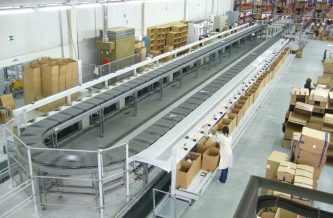Reducing shutdown times with a safer and faster way of changing underground belts for Iron Ore producer, WA

CLIENT: Iron Ore producer, WA
PRODUCT CATEGORY(S): Conveyor Belt
CLIENT CONTACT: Available on request
CONVEYED MATERIAL(S): Iron Ore
CLIENT INDUSTRY: Mining
SERVICE CATEGORY(S): Supply/ Project Management/ On-site Service
KEY BENEFITS ACHIEVED:
50% time saving when compared to traditional methods. Zero lost time injury-free
THE CHALLENGE
- When it comes time to perform a planned shutdown, reducing the belt downtime was high on the priority list for an iron ore company in the Pilbara.
- Coordinating all the resources, equipment, tools and parts to keep everything on track can be challenging for even the most experienced team.
- Belle Banne Conveyor Services (BBCS), part of the Fenner Dunlop group of companies, reviewed the customer’s process and found that they could radically reduce their shutdown window by simply pre-splicing their longer yard belts.
THE SOLUTION
- BBCS introduced their original Flaking System for the client’s belt change-out, and with this new procedure, the service team on-site only had to manage the closing splices, saving significant time and money linked to each precious minute of downtime.
- BBCS designed and built all the necessary equipment for the shutdown. With safety as the backbone, the equipment was designed to be simple to assemble and minimise the manual handling constraints associated with the work.
- The new system operates with two conveyor belt winders positioned on the ground at 90 degrees to the conveyor system and in line with turning frames. The latter items are mounted on stands that are bolted to the conveyor structure. This procedure is executed weeks before the scheduled shutdown to reduce the time required on the day.
- During the shutdown, the conveyor belt is clamped and cut, and belt ends are moved away from the structure by crane. The turning frame mounting stands are then fixed to the system.
- The new conveyor belt is attached by a pulling plate to the previous conveyor belt through the turning frame. The second conveyor end of the old belt is then put through the second turning frame and is attached to the remaining belt winder.
- The new conveyor belt is fed off the winder through the turning frame and onto the conveyor system while the other winder is pulling off the old belt.
THE RESULTS
- Zero lost time injury-free.
- BBCS met all the installations timetables (50% time saving when compared to traditional methods).
- The client standardised all their range of equipment, including belt winders, turning frames, flaking stations and winches, all manufactured by BBCS.
- The improved belt changing method has branched off into several other initiatives in the customer’s site.
- The flaking system proved once more that it is the easiest and safest way for changing conveyor belts.
- The BBCS original flaking system is the benchmark for safe and reliable conveyor belt change outs around Australia.


